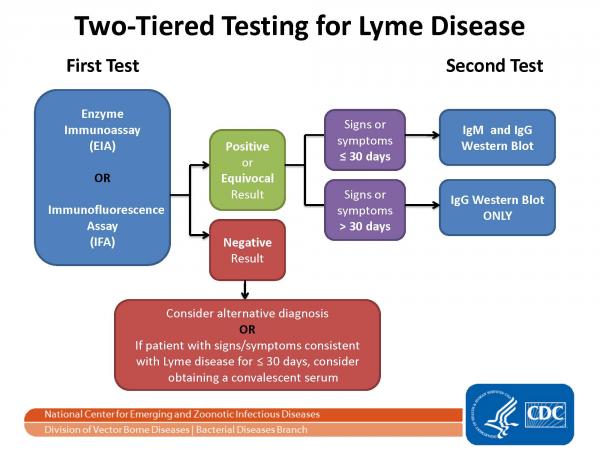Lyme Disease Tests How is it used?
2016-04-26
Lyme disease tests are used to determine if a person with characteristic signs and symptoms has been infected by the bacteria Borrelia burgdorferi or Borrelia mayonii. The tests detect antibodies produced by the immune system in response to the infection.
Lab tests can detect two different classes of antibody, IgM and IgG.
Borrelia IgM (immunoglobulin M) antibodies are usually detectable in the blood about two to three weeks after exposure. IgM levels increase to maximum concentrations at about six weeks and then begin to decline.
IgG (immunoglobulin G) antibodies are not detectable until several weeks after exposure, increase to maximum levels at about four to six months, and may remain at high levels for several years.
The Centers for Disease Control and Prevention (CDC) recommends that two different methods be used to detect these antibodies and to confirm a diagnosis of Lyme disease. The initial test is intended to be very sensitive so that it will detect as many cases of Lyme disease as possible. However, it may be positive when a person does not have Lyme disease but has some other condition, such as a different tick-borne disease, syphilis, or anautoimmune disorder such as lupus. Therefore, if the result of the initial test is positive, a second test that uses a different method is used to confirm the findings. The following chart illustrates the recommended steps:

Lyme disease can sometimes be challenging to diagnose. If a person has removed a tick from his or her skin, had a known tick bite, and lives in or has visited an area of the country where Lyme disease is most prevalent, then the timing of the potential infection can be closely estimated. However, the tick is about the size of the head of a pin and the bite may not be noticed. Not everyone will develop the characteristic rash, and the symptoms that a person does have may be nonspecific and flu-like in the early stages, with joint pain that develops into chronic arthritis and/or with neurological symptoms that appear months later.
A blood test for antibodies to the bacteria is the preferred test for the diagnosis of Lyme disease. However, if a person hascentral nervous system symptoms, such as meningitis, then IgM, IgG, and western blot testing may sometimes be performed on cerebrospinal fluid (CSF).
In special cases, polymerase chain reaction (PCR) testing may be performed on a sample because it is a more sensitive way of detecting an infection with Borrelia. However, this is not an FDA cleared or approved test method and it is not widely available. The CDC does not currently recommend PCR testing for the diagnosis of Lyme disease.


 Recent Articles
Recent Articles